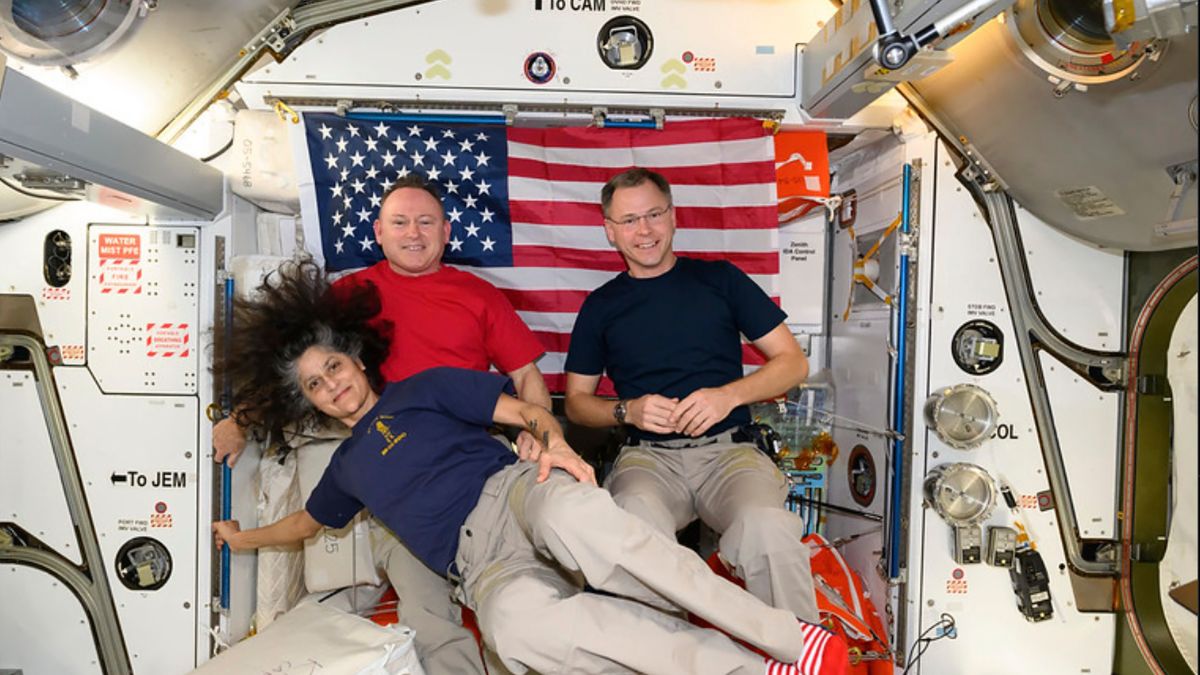SpaceX and Nasa called off a flight to the International Space Station (ISS) to replace a new crew with the US astronauts Barry “Butch” Wilmore and Sunita Williams. With less than an hour to countdown, SpaceX delayed the attempt to send Crew-10 to the ISS due to a launch pad problem.
This would add at least two more days to the long-awaited homecoming of Wilmore and Williams who were launched on a Boeing Starliner capsule to the space station last June.
Now that their return is delayed again, how long can astronauts stay in space?
Let’s take a look.
Flight to replace NASA’s stuck astronauts delayed
Nasa’s replacement crew to the ISS was to be launched into space onboard the Falcon rocket from Florida’s Cape Canaveral Space Force Station. However, the Nasa-SpaceX mission was postponed on Wednesday due to a hydraulic ground issue with a ground support clamp arm for the Falcon 9 rocket.
The rocket was to fly four new crew members to the ISS, paving the way for the return of Williams and Wilmore.
Another launch attempt on Thursday was put off due to high winds and rain forecast. The next liftoff for Crew-10 is planned for 7:03 p.m. EDT (4:33 am IST) Friday, with astronauts Wilmore and Williams expected to depart the space station on March 19, Nasa said in a statement.
Wilmore and Williams , who went to the ISS on Boeing’s Starliner capsule last June, were to return in a week but were stuck after the spacecraft witnessed major breakdowns in transit.
Long stays in space
Wilmore and Williams are not the only astronauts whose stay in space was unexpectedly extended.
Nasa astronaut Frank Rubio has the record for the longest amount of time in space by a US astronaut. He returned to Earth in October 2023 after spending 371 days on the ISS. His space travel was extended after his original capsule was hit with space junk. Rubio and two cosmonauts came back to Earth in a replacement capsule that landed in Kazakhstan.
Impact Shorts
More ShortsRussian cosmonaut Valeri Polyakov continues to hold the record for the longest ever spaceflight by a human. He spent 437 days onboard Russia’s Mir space station between 1994 and 1995.
In September 2024, Russian cosmonauts – Oleg Kononenko and Nikolai Chub – broke the record for the longest stay on the ISS with 374 days in orbit.
ALSO READ: Fly me to the moon: How do women handle their period in space?
What happens to the body in space?
Space travel affects nearly every part of the astronaut’s body. There is microgravity on the International Space Station that could take a toll on the body.
Astronauts and objects float in space as the ISS is in free fall — the space station is falling towards Earth and moving ahead around the Earth at nearly the same speed.
This ensures that the objects appear weightless in space. Astronauts do not have to strain their muscles to lift or move heavy objects, but there is a downside.
Muscle and bone mass begin to diminish in space owing to microgravity. As per the UK Space Agency, astronauts can lose as much as 40 per cent of muscle and 12 per cent of bone mass after five months in space.
Just two weeks in space leads to a 20 per cent decline in muscle mass, according to a study published in the Canadian Medical Association Journal.
Astronauts can lose one to two per cent of their bone mass every month in space and up to 10 per cent over a period of six months.
After returning to Earth, it can take four years for their bone mass to return to normal.
To combat the loss of muscle and bone mass, astronauts have to exercise for over two hours while in orbit at the ISS.
The microgravity in space also affects the weight of astronauts. Eyesight can also be impacted, including changes in vision, which could occur just weeks in space. While some vision changes reverse in a year of heading back to the Earth, others can be permanent.
Skin, genes, immune system and gut bacteria of the astronauts have also been affected in a long-duration spaceflight.
With inputs from agencies


)

)
)
)
)
)
)
)
)



